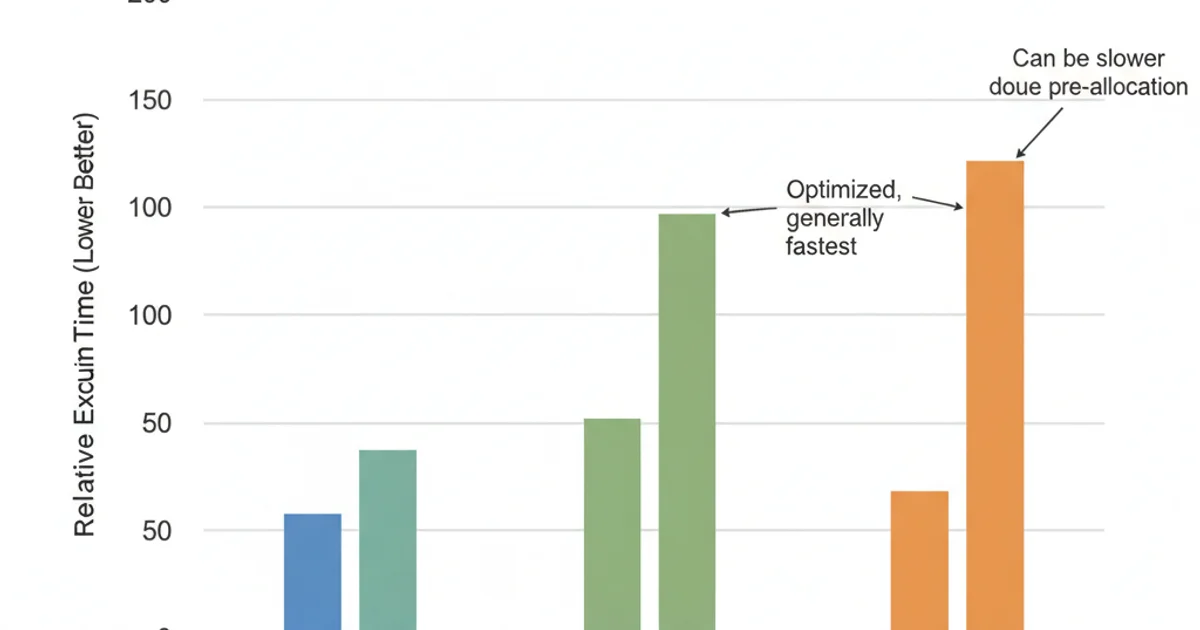Convert list to array in Java
Categories:
Converting Java Lists to Arrays: A Comprehensive Guide

Learn various methods to efficiently convert Java List objects into arrays, understanding their nuances, performance implications, and best use cases.
In Java programming, List and Array are two fundamental data structures used for storing collections of elements. While List (especially ArrayList) offers dynamic resizing and rich API methods, Array provides fixed-size, type-safe storage with direct memory access, often preferred for performance-critical scenarios or when interacting with APIs that expect arrays. This article explores different techniques to convert a List into an Array, highlighting their advantages and potential pitfalls.
Understanding the Need for Conversion
The primary reasons for converting a List to an Array typically revolve around interoperability and performance. Many legacy APIs or third-party libraries are designed to work with arrays. Furthermore, for primitive types or when the size of the collection is known and fixed, arrays can sometimes offer better performance due to their contiguous memory allocation and direct indexing. Understanding when and why to perform this conversion is crucial for writing efficient and maintainable Java code.
flowchart TD
A[Start with List] --> B{Why Convert?}
B -->|API Compatibility| C[External API expects Array]
B -->|Performance| D[Fixed size, primitive types, direct access]
B -->|Specific Algorithms| E[Algorithms optimized for Arrays]
C --> F[Convert List to Array]
D --> F
E --> F
F --> G[Use Array]
G --> H[End]Decision flow for converting a List to an Array
Method 1: Using List.toArray() (No-Argument Version)
The simplest way to convert a List to an Array is by using the toArray() method provided by the List interface. This method returns an Object[] array containing all the elements of the list in proper sequence. While straightforward, it has a significant drawback: the returned array is of type Object[], meaning you'll need to cast elements if you want to use them as their original type, which can lead to ClassCastException at runtime if not handled carefully.
import java.util.ArrayList;
import java.util.List;
public class ListToArrayNoArg {
public static void main(String[] args) {
List<String> stringList = new ArrayList<>();
stringList.add("Apple");
stringList.add("Banana");
stringList.add("Cherry");
Object[] objectArray = stringList.toArray();
System.out.println("Array elements (Object[]):");
for (Object obj : objectArray) {
String s = (String) obj; // Runtime cast needed
System.out.println(s);
}
}
}
Example of using List.toArray() without arguments.
toArray() method returns an Object[]. This means you lose type safety, and explicit casting is required, which can introduce ClassCastException if the list contains mixed types or if the cast is incorrect.Method 2: Using List.toArray(T[] a) (Parameterized Version)
This is the preferred and most common way to convert a List to a type-safe array. The toArray(T[] a) method takes an array of the desired type as an argument. If the passed array a is large enough to hold all elements, they are stored in a. Otherwise, a new array of the same runtime type as a and the size of the list is allocated and returned. This method ensures type safety and avoids the need for explicit casting.
import java.util.ArrayList;
import java.util.List;
public class ListToArrayParameterized {
public static void main(String[] args) {
List<String> stringList = new ArrayList<>();
stringList.add("Apple");
stringList.add("Banana");
stringList.add("Cherry");
// Option 1: Pass an empty array of the desired type
String[] stringArray1 = stringList.toArray(new String[0]);
System.out.println("Array elements (String[] - Option 1):");
for (String s : stringArray1) {
System.out.println(s);
}
// Option 2: Pass an array of sufficient size (or smaller, it will create a new one)
String[] stringArray2 = new String[stringList.size()];
stringList.toArray(stringArray2);
System.out.println("\nArray elements (String[] - Option 2):");
for (String s : stringArray2) {
System.out.println(s);
}
}
}
Example of using List.toArray(T[] a) for type-safe conversion.
list.toArray(new T[0]), the new T[0] is a common idiom. It tells the method the runtime type of the array to be returned. If the list is not empty, a new array of the correct size and type will be allocated by the method. This is generally the most concise and recommended approach.Method 3: Using Java 8 Streams
For Java 8 and later, streams provide a functional and often more readable way to perform transformations, including converting a List to an Array. The stream() method on the List returns a Stream, which can then be collected into an array using toArray(IntFunction<T[]> generator). This method is particularly useful when you need to perform intermediate operations (like filtering or mapping) before collecting into an array.
import java.util.ArrayList;
import java.util.List;
public class ListToArrayStreams {
public static void main(String[] args) {
List<Integer> integerList = new ArrayList<>();
integerList.add(10);
integerList.add(20);
integerList.add(30);
integerList.add(40);
// Convert to Integer[] array
Integer[] integerArray = integerList.stream()
.toArray(Integer[]::new);
System.out.println("Array elements (Integer[] via Streams):");
for (Integer i : integerArray) {
System.out.println(i);
}
// Example with filtering before converting
String[] filteredStrings = List.of("one", "two", "three", "four")
.stream()
.filter(s -> s.length() > 3)
.toArray(String[]::new);
System.out.println("\nFiltered array elements (String[] via Streams):");
for (String s : filteredStrings) {
System.out.println(s);
}
}
}
Converting a List to an Array using Java 8 Streams.
Integer[]::new syntax is a method reference to the constructor of the Integer array. It's equivalent to a lambda expression size -> new Integer[size], which creates a new array of the specified size and type.Performance Considerations
While all methods achieve the conversion, their performance characteristics can differ, especially for very large lists. Generally, List.toArray(T[] a) is often the most performant for direct conversion without intermediate operations, as it avoids the overhead of stream creation. Streams introduce some overhead but offer greater flexibility for complex transformations. The no-argument toArray() is generally fast but comes with the type-safety cost.

Conceptual performance comparison of conversion methods (actual results may vary based on JVM, hardware, and list content).
1. Choose the Right Method
If you need a type-safe array and no intermediate operations, use list.toArray(new T[0]). If you're already using streams or need to perform filtering/mapping, stream().toArray(T[]::new) is a good choice. Avoid toArray() (no-argument) unless you specifically need an Object[] or are certain about casting.
2. Consider Primitive Types
Remember that Java arrays are covariant, but generics are not. You cannot directly convert a List<Integer> to int[] using toArray(). You'll need to stream and map to primitive types: list.stream().mapToInt(Integer::intValue).toArray();
3. Handle Empty Lists
All discussed methods correctly handle empty lists, returning an empty array of the specified type. No special checks are usually needed.